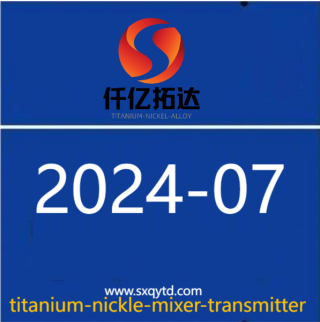Nickel flange installation and maintenance guide
[ 信息发布:本站 | 时间:2024-03-14 | 浏览:478 ]
Nickel flange installation and maintenance guide

Installation and maintenance guidelines for nickel flanges are crucial to ensure their proper functioning and longevity within a piping system. Here's a comprehensive guide:
Installation:
-
Preparation: Ensure that the flange mating surfaces on the pipes or equipment are clean, smooth, and free from any defects or debris that could compromise the seal.
-
Alignment: Properly align the flanges and ensure that they are concentric and parallel to each other. Misalignment can lead to leaks or stress concentrations, affecting the integrity of the joint.
-
Gasket Selection: Choose an appropriate gasket material compatible with the fluid and operating conditions. Install the gasket between the flange faces to provide a tight and leak-free seal.
-
Bolt Tightening: Gradually tighten the flange bolts in a crisscross pattern to ensure even pressure distribution and prevent flange distortion. Follow the recommended torque values specified by the flange manufacturer.
-
Flange Protection: Protect the flange faces and exposed threads from damage during installation by using suitable covers or caps. Remove any protective covers after installation is complete.
-
Pressure Testing: Conduct a pressure test on the system to verify the integrity of the flange joint and gasket seal. Monitor for any leaks and rectify them before putting the system into service.
Maintenance:
-
Regular Inspection: Periodically inspect the flange joints for signs of leakage, corrosion, or damage. Pay attention to areas prone to corrosion, such as the flange faces and bolt threads.
-
Corrosion Protection: Apply corrosion-resistant coatings or treatments to the flange surfaces, especially if they are exposed to corrosive environments. Regularly inspect and touch up the coatings as needed.
-
Gasket Replacement: Replace the gaskets periodically or whenever signs of deterioration are observed. Use the appropriate gasket material and ensure proper installation to maintain a leak-free seal.
-
Bolt Retightening: Check the bolt tightness periodically, especially after system operation or temperature changes. Retighten the bolts to the specified torque values to maintain the integrity of the flange joint.
-
Flange Face Cleaning: Clean the flange faces before reinstalling the flanges or replacing gaskets. Remove any debris, scale, or residue that could affect the sealing surface.
-
Temperature Monitoring: Monitor the operating temperature of the flanges regularly, especially in high-temperature applications. Ensure that the flanges are rated for the maximum temperature encountered in the system.
-
Repair or Replacement: If any flanges are found to be damaged or compromised during inspection, repair or replace them promptly to prevent further issues or failures.
By following these installation and maintenance guidelines, you can ensure the reliable performance and longevity of nickel flanges in your piping system. Regular inspection, proper maintenance, and timely repairs are essential for maximizing the lifespan of the flanges and maintaining the integrity of the overall system
Shaanxi Qianyi Tuoda Technology Co., Ltd;
Email:qy002@sxqytd.com;WhatsApp +8618829679311
ASTM B161 | ASTM B162 | ASTM B163 | ASTM B164 | ASTM B165 | ASTM B166 | ASTM B168 | ASTM B407 | ASTM B408 | ASTM B423 | ASTM B424 | ASTM B425 | ASTM B434 | ASTM B435 | ASTM B443
INCONEL600|INCONEL601|INCONEL625|INCONEL718|INCONELX-750|INCOLOY A-286|NIMONIC 75|NIMONIC 80A|NICKEL 200|NICKEL 201|MONEL 400|MONEL K-500|INCONEL 690|INCOLOY 800|INCOLOY 800H|INCOLOY 800HT|INCOLOY 825|HASTELLOY C-276|
